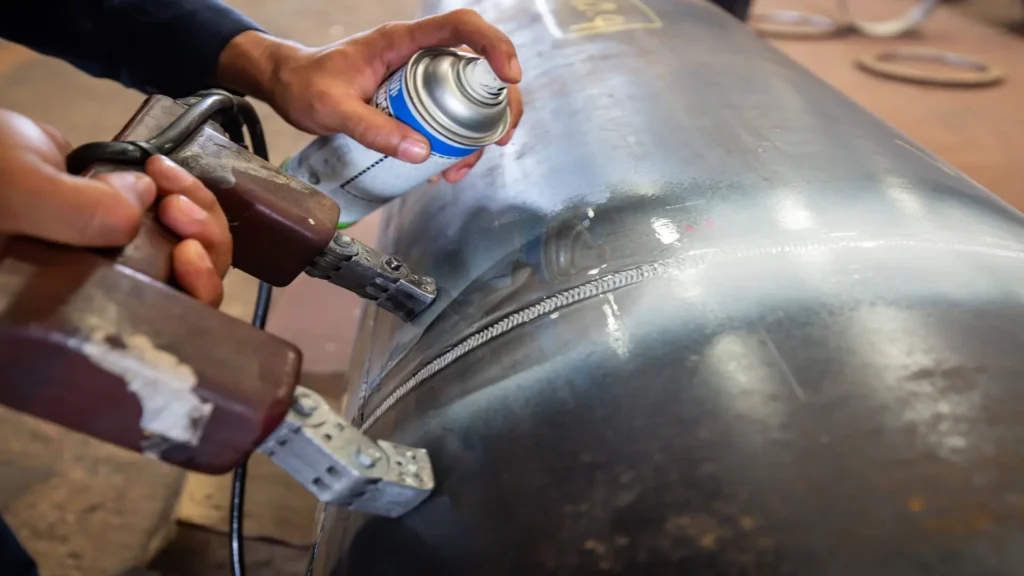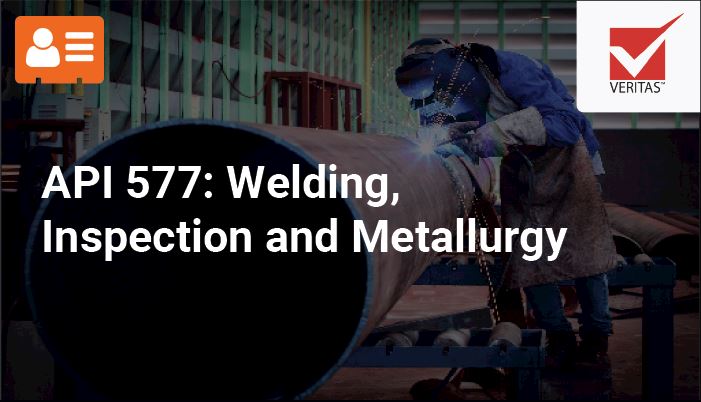Just How Effective Welding Examination Improves Architectural Honesty and Longevity
In the world of construction and design, the value of welding examination can not be overemphasized, as it plays an essential role in making certain structural honesty and expanding the life expectancy of projects. By releasing a series of sophisticated examination techniques, such as ultrasonic and radiographic testing, professionals can identify problems that might jeopardize the reliability of a framework. Nonetheless, the inquiry continues to be: just how do these thorough procedures convert into tangible benefits for durability and safety? Join the expedition of exactly how effective welding examinations can transform potential susceptabilities right into toughness, adding to the enduring success of constructions.
Significance of Welding Inspection
Making certain the architectural stability and security of bonded constructions requireds extensive welding examination processes. Welding inspection works as a vital safeguard in the building and construction and manufacturing markets, where the toughness and durability of joints substantially influence the general performance of frameworks. This inspection guarantees that welds fulfill specific criteria and requirements, reducing the threats connected with architectural failures. The effects of insufficient welds can be disastrous, resulting in pricey repair work, functional downtimes, or perhaps disastrous failures, all of which highlight the vital significance of extensive evaluation.
In addition to security, welding inspection plays an important function in quality control. By sticking to predetermined standards, evaluations ascertain the uniformity of welds, ensuring that each satisfies the desired toughness and aesthetic requirements. This consistency is necessary not just for safety and security however also for keeping the online reputation and integrity of contractors and manufacturers. Furthermore, regulatory compliance is a substantial vehicle driver of welding inspection practices. Industry standards and codes, such as those from the American Welding Culture (AWS) or the International Organization for Standardization (ISO), require adherence to strict guidelines, emphasizing the significance of assessments in meeting these expert and legal responsibilities.
Secret Assessment Methods

Ultrasonic Examining (UT) utilizes high-frequency audio waves to detect subsurface flaws, supplying exact information concerning weld integrity without causing any kind of damage. Radiographic Evaluating (RT), involving X-rays or gamma rays, provides a thorough photo of the weld's internal structure, exposing concealed flaws. Magnetic Bit Examining (MPT) is another non-destructive approach, especially effective for spotting surface area and near-surface stoppages in ferromagnetic materials.
Penetrant Testing (PT) involves the application of a liquid color to reveal surface-breaking defects, supplying a straightforward and cost-efficient option for non-porous materials. Each technique has its details applications, staminas, and restrictions, and often a mix of methods is used to achieve thorough assessment outcomes. Mastery of these methods improves the dependability and longevity of welded structures, aligning with safety and efficiency assumptions.
Identifying Common Problems

Porosity, identified by gas pockets within the weld, reduces the weld's stamina and toughness. It commonly arises from impurities or incorrect shielding gas. Fractures, which can happen throughout or after welding, pose significant risks because of their possible to circulate under anxiety. They commonly arise from excessive stress and anxiety, quick cooling, or improper weld layout.
Incomplete combination, where the weld steel fails to bond completely with the base product, weakens the architectural integrity, bring about weak joints. This issue generally stems from insufficient heat input or incorrect welding technique. Slag incorporations happen when non-metallic materials are entraped in the weld, jeopardizing its strength and quality. These are typically an outcome of insufficient cleaning in between weld passes or inappropriate flux use.
Identifying these problems via precise assessment approaches, such as visual exam, ultrasonic testing, or radiography, is vital. Addressing these issues ensures weld high quality, eventually supporting the architectural stability and safety and security of the constructed environment.

Enhancing Structural Efficiency
Comprehending the value of identifying usual weld issues naturally leads to checking out approaches for improving structural efficiency. The fundamental approach for boosting performance involves employing innovative welding methods and products that mitigate problem event. Utilizing high-grade filler materials and guaranteeing correct warmth control can substantially decrease concerns such as porosity and splitting, therefore boosting the weld's stability.
Integrating state-of-the-art welding technologies, such as laser welding and rubbing mix welding, more magnifies structural resilience. These techniques supply exceptional accuracy and decreased thermal distortion, directly impacting the durability and toughness of the welded frameworks. Moreover, embracing automated welding systems can guarantee consistent and repeatable weld quality, lessening human error.
Furthermore, carrying out extensive pre-weld and post-weld treatments is essential. Appropriate joint layout, surface preparation, and stress-relieving processes add to optimum weld performance. Conducting comprehensive pre-weld inspections allows for early discovery of prospective concerns, facilitating prompt improvements prior to they endanger the framework.
Long-term Advantages of Inspection

Via attentive evaluation methods, the long-term benefits to architectural honesty ended up being progressively noticeable. Consistent and thorough welding evaluations play a crucial role in avoiding architectural failures by determining variances click over here now and flaws early in the building and construction procedure. This positive method makes sure that prospective concerns are attended to before they can endanger the safety and security and sturdiness of frameworks. By catching defects early, expensive repair work and downtime are minimized, ultimately expanding the life-span of the infrastructure.
In addition, routine inspections add to maintaining compliance with market criteria and guidelines, thereby staying clear of financial and legal consequences. This adherence to quality control not only boosts the reliability of the structure however additionally cultivates trust amongst stakeholders, including clients, designers, and regulative bodies. The comprehensive documents of assessment results acts as an important source for future maintenance and repair service efforts, helping with notified decision-making.
In addition, efficient examination practices sustain technology by incorporating sophisticated technologies such as non-destructive screening and electronic imaging, which can boost accuracy and efficiency. This technological integration further emphasizes the commitment to quality in architectural honesty. Inevitably, investing in thorough welding assessments is a sensible method that produces significant long-lasting advantages, securing both the economic and physical investment in infrastructure tasks.
Verdict
Reliable welding examination plays a vital duty in enhancing structural honesty and durability by identifying defects early in the building procedure. Making use look at these guys of techniques such as visual inspection, ultrasonic testing, and radiographic testing makes sure the discovery of concerns like fractures and porosity that compromise weld strength. Strenuous inspections ensure conformity with sector criteria, consequently lengthening the life-span of frameworks, lessening pricey fixings, and cultivating stakeholder rely on the integrity and safety of bonded buildings.
In the world of building and engineering, the relevance of welding assessment can not be overemphasized, as it plays a pivotal role in making sure structural integrity and extending the life-span of tasks.Ensuring the structural integrity and safety of bonded constructions requireds strenuous welding evaluation procedures.Building upon the significance of welding evaluation in protecting structural integrity, recognizing the vital evaluation methods ends up being vital for effective execution. Effective welding assessment incorporates a variety of methods created to evaluate weld quality, making certain compliance with strict engineering criteria - Welding Inspection Madison.Reliable welding examination plays an important duty in boosting structural integrity and long life by recognizing problems early in the building process